![PEK Solo: Closed & Open Universes [2 CDS] (Evil Clown) PEK Solo: Closed & Open Universes [2 CDS] (Evil Clown)](https://www.teuthida.com/productImages/misc4/27987.jpg)
Evil Clown mastermind David Peck (PEK) in a double album of solo work, 1st pure solo, then in a long work accompanied by his own prepared mixes, using clarinets, saxophones, English horn, goat horn, tarota, bamboo, Chistmas & alto flutes, slide whistles, sheng, Melodica, Akai Wind controller, moog subsequent, gongs, brontosaurus & tank bells, Englephone, and delay.
In Stock
Quantity in Basket: None
Log In to use our Wish List
Shipping Weight: 4.00 units
Sample The Album:
David Peck (PEK)-clarinet, contralto clarinet, alto saxophone, tenor saxophone, bass saxophone, tarota, bamboo, Chistmas flute, alto flute, Melodica, Akai Wind controller, moog subsequent, gongs, brontosaurus bell, tank bells, Englephone, digital delay, Ableton mix
Click an artist name above to see in-stock items for that artist.
Label: Evil Clown
Catalog ID: 9217
Squidco Product Code: 27987
Format: 2 CDS
Condition: New
Released: 2019
Country: USA
Packaging: Digipack
Recorded at Evil Clown Headquarters, in Waltham, Massachusetts, on June12, 15 and 30, 2019.
"Occasionally there is a break in the Evil Clown calendar and I have a little time for a solo session. In the 90s, I did solo performances occasionally - which presented several challenges. I like to work in a long form with lots of instrument changes, so I came up with several tricks for rapidly changing horns while continuing the improvisation...
Recently, I have been using the Ableton software to create electronic mixes which we use in several of the bands as an accompaniment track. In performance, I ride the fader from off to very present, but most of the time more to the background. Raw samples are taken from the Evil Clown Catalog and also specially recorded at Evil Clown Headquarters with instruments drawn from the Evil Clown arsenal. I then use Adobe Audition to process the samples and finally Ableton to assemble a timeline and create a mix. Several of my solo records have used these mixes. The accompaniment track neatly solves the problem of transitioning instruments.
After several years of this process, I have a lot of mixes that can be blended together in various ways. So, for most sessions that use an Ableton Mix I record a few new samples, or sample from recent shows by the various Evil Clown Ensembles and combine those samples with some from the Library. For this set, Open and Closed Universes, I decided to generate a large new set of samples and not use any from the library. I started by recording a bunch of short solos (3 to 15 minutes) with digital delay. 13 of these short solos on wind instruments comprise disc 1 of this release, but I also recorded some longer pieces with my mallet controller and the Moog Subsequent and the newly arrived Prophet. I grabbed Yuri's solo from the Englephone demo reel, and a few sections from LOFO - The Photon Epoch.
I made new multi-layered complex mixes with my usual methods of these Sonority Sets: Synths, Sheng, Horns, Gongs, Flutes, Bells. Each of these is a timbre set comprised of layers of similar sounds which have undergone transformations of pitch and duration. The mixes are typically about 40 minutes each.
Then, I planned out the basic elements of the Ableton composition including opening and closing sections. In Ableton, I made a track for each of the timbre sets and then did a real time mix for just under 80 minutes, blending them, featuring one or another, or rapidly transforming the sonority.
Finally, I took this final complex mix, and a few simpler ones and created one last Ableton file which I used for the performance, mixing this mix and the simpler ones in real time while playing a bunch of different instruments over the course of the CD length work. This process is the most involved one that I have used to date for one of these solo CDs, but the prepared mixes give me a great deal of real-time control within the scope of my planning to sculpt soundscape accompaniments of varying sonority and density.
I really liked the shorter improvisations recorded each on a single instrument with delay, and so I decided that I would present a 2 CD package, with a selection of these sample pieces on Disc 1 and the solo with Ableton accompaniment on Disc 2."-Liner Notes by PEK
Artist Biographies
• Show Bio for David Peck (PEK) "PEK (aka David Peck) is a multi-instrument improviser who plays all kinds of instruments including saxophones, clarinets, double reeds, percussion, electronics and auxiliary sound making devices of all kinds. PEK was born in 1964 and started playing clarinet and piano in elementary school. In 7th grade he started saxophones, first on alto, then switching to tenor in high school. He spent 10 years playing in rock bands and studying classical and jazz saxophone with Kurt Heisig in the San Jose CA area before moving to Boston in 1989 to attend Berklee where he studied performance with George Garzone. While Berklee was an excellent place to study harmony, voice training and other important aspects of a conventional formal music training course of study, it was not a very good environment for learning contemporary (or pure) improvisation (apart from his work with George). PEK did find, however, that Boston had a thriving improvisation scene, and it was here that he developed his mature pure improvisation language. During the 90s, PEK performed with many notable improvisers including Masashi Harada, Glynis Lomon, William Parker, Laurence Cooke, Eric Zinman, Glenn Spearman, Raqib Hassan, Charlie Kohlhase, Steve Norton, Keith Hedger, Mark McGrain, Sydney Smart, Matt Samolis, Martha Ritchey, Larry Roland, Dennis Warren, Yuri Zbitnov, Craig Schildhauer, Keith Fullerton Whitman, Leslie Ross, Rob Bethel, Wayne Rogers, Eric Rosenthal, Taylor Ho Bynum, Tatsuya Nakatani, James Coleman, B'hob Rainey and George Garzone. PEK met cellist Glynis Lomon when they played together in the Masashi Harada Sextet which existed between 1990 and 1992. They developed a deep musical connection which they continued following the MHS; first with the Leaping Water Trio for a few years and then with the first version of Leap of Faith in 1994. Leap of Faith was very active in Boston from that time until 2001 and went through a series of several core ensembles which always included both PEK and Glynis. Other key Leap of Faith core members during this period were Mark McGrain (trombone), Craig Schildhauer (double bass), Sydney Smart (drums), Yuri Zbitnov (drums) and James Coleman (theremin). Leap of Faith was always a very modular unit with constantly shifting personnel and many different guests. The early Leap of Faith period concluded in 2001 with a dual bill at an excellent room at MIT called Killian Hall with George Garzone's seminal trio the Fringe. At this time, PEK changed careers for his day gig, returning to college for a computer science degree and beginning to work in the structural engineering industry at Simpson Gumpertz & Heger. He became far too busy to continue the heavy music schedule, and preferring not to do music casually, he entered a long musically dormant period. Flash forward to early 2014. PEK was a regular mail order customer of Downtown Music Gallery, the premiere specialty shop in Manhattan for free jazz, contemporary classical and other new music. While in New York on SGH business, he went down to DMG and had a lengthy conversation with proprietor Bruce Lee Gallanter about the early Leap of Faith period. He then sent Bruce a package of about 15 CD titles from the 90s and was pleasantly surprised when Bruce managed to sell nearly all of it. This public interest in the old catalog spurred PEK into getting back into performance. He reformed Leap of Faith with Glynis Lomon (cello, voice, aquasonic), Yuri Zbitnov (drums) and newcomer Steve Norton (clarinets and saxophones) and started to record and perform in early 2015. Now having access to financial resources always absent in the early period, PEK began to accumulate a huge collection of instruments both for himself and also to expand the palate of Leap of Faith and the other projects soon to follow. He acquired new recording equipment and many new saxophones, clarinets, double reeds, metal and wooden percussion instruments, electronic instruments, signal processing equipment and other sound-making devices from many cultures. He revived his old record label, Evil Clown, and created reissues and new releases for much of the early period work by Leap of Faith and many of his other projects to sell at shows, DMG and the internet (around 100 archival titles). The Arsenal of equipment has a grand purpose: To establish a large scale aesthetic problem to use the instruments to make long form broad palate improvisations with dramatic transformation and development. The very broad palate enables the long improvisations to evolve with very different movements and pronounced development over their length. PEK started the Leap of Faith Orchestra, a greatly expanded Leap of Faith, to achieve this purpose along with a number of smaller ensembles which are sub-units of the full orchestra including String Theory (focusing on orchestral strings), Metal Chaos Ensemble (focusing on metallic percussion), Turbulence (horn players), Mekaniks (electronics) and Chicxulub (space rock). In all, the Evil Clown roster includes over 40 musicians who contribute to one or more of the various projects, with PEK participating in all of them. Leap of Faith has also had some special guests like Steve Swell (trombone), Thomas Heberer (trumpet), Jeremiah Cymerman (clarinet) and Jim Hobbs (alto sax). The Leap of Faith Orchestra happens whenever several of these groups play together at the same time, or the ensemble exceeds 7 or 8 players. The Full Orchestra is a special case discussed below. The current roster is comprised in part of: - Core Leap of Faith: PEK, Glynis Lomon, Yuri Zbitnov (Steve Norton has since left to go to Graduate School) - Percussion: Andria Nicodemou (vibes), Kevin Dacey (perc), Joe Hartigan (perc), Syd Smart (drums) - Strings: Jane Wang (cello), Clara Kebabian (violin), Tony Leva (bass), Mimi Rabson (violin), Kirsten Lamb (bass), Brendan Higgins (bass), Silvain Castellano (bass), Rob Bethel (cello), Kit Demos (bass), Matt Scutchfield (violin), Helen Sherrah-Davies (violin) - Piano: Eric Zinman, Peter Cassino, Emilio Gonzales - Horns: Dave Harris (tuba, trombone), Charlie Kohlhase (saxes), Bob Moores (trumpet), Sara Honeywell (trombone), Forbes Graham (trumpet), John Baylies (tuba), Dan O'Brien (woodwinds), Zack Bartolomei (woodwinds), Kat Dobbins (trombone), Steve Provizer (trumpet, baritone horn), Matt Samolis (flute) - Electronics: Greg Grinnell, Jason Adams (electric bass, electronics) - Guitar: Dru Wesely, Grant Beale, Chris Florio - Voice: Dei Xhrist Evil Clown is documenting the ongoing solutions to this aesthetic challenge by creating limited CD editions and digital download albums of every performance and studio session by this array of ensembles. Interested audience can track the development of the grand scale project over the many releases - over 80 albums recorded and released so far between Jan of 2015 and March of 2017. All of the bands are highly modular, changing personnel and instrumentation with each meeting. The result is an enormous amount of music that shares the same fundamental improvisational language but differs from event to event greatly both in sonority (overall sound) and specific detail. For the full Leap of Faith Orchestra, PEK composes a graphic notation score to guide the improvisation. The full Orchestra is comprised of roughly 20 players from the roster and performs twice a year. Two performances have occurred to date - The Expanding Universe in June of 2016 and Supernovae in November of 2016. Composition for Possible Universes is completed and the work will be performed on May 28, 2017 with another performance (score not yet begun) scheduled for November. The scores use a device called Frame Notation where written English descriptions of the overall sonority desired and simple graphic symbols are given durations for each player on their part along with direction on when to play and when not to play. The directions are put in little boxes called frames which are arranged on a timeline and are simple enough to be immediately understood by the performers. Horizontal lines, called Duration Bars, extend across the page indicating when each Event (the Frame + the Duration Bar) begins and ends. An Event can be intended for the full ensemble, a defined group within the ensemble (for example, Metal Chaos Ensemble), a custom group (for example, Tubas), or an individual (for example, Andria Feature). Parts are the full score annotated with Hiliters so that each player's instructions stand out. They can clearly see their individual instructions, but can also see the big picture, enabling far more knowledge about the pending actions of the rest of the ensemble than typical in pure improvisation. The players track the elapsed time on a very large sports clock. There is no melodic, harmonic or rhythmic information specified. This system allows PEK to compose detailed Ensemble Events without having to notate pitches or rhythms which would require significant rehearsal to accurately achieve." ^ Hide Bio for David Peck (PEK)
12/16/2024
Have a better biography or biography source? Please Contact Us so that we can update this biography.
Track Listing:
CD1
1. Wave like Aspects of Particle Phenomena (gong) 1:24
2. Ring Singularities (wood flute) 7:45
3. Cosmic String Loop (English horn) 6:10
4. Geometry of Space (clarinet) 11:59
5. Spin Foam (3 slide whistles) 4:14
6. Closed Loops of Force (goat horn) 3:30
7. Quanta of Space (sheng) 9:00
8. Probability Amplitudes (alto saxophone) 9:12
9. Equations of motion (Christmas flute) 4:29
10. Intractability (tenor saxophone) 9:16
11. Spacetime intervals (alto flute) 5:55
12. Ring singularities reprise (wood flute) 1:48
13. Particle like aspects of wave phenomena (gong) 1:20
CD2
1. Curvature Of Space 1:18:22
Improvised Music
Free Improvisation
Boston Area Improvisers
Recordings by or featuring Reed & Wind Players
Percussion & Drums
Electro-Acoustic
Electro-Acoustic Improv
Solo Artist Recordings
Search for other titles on the label:
Evil Clown.


![PEK Solo: Closed & Open Universes [2 CDS] (Evil Clown) PEK Solo: Closed & Open Universes [2 CDS] (Evil Clown)](https://www.teuthida.com/productImages/full/27987.Full.jpg)
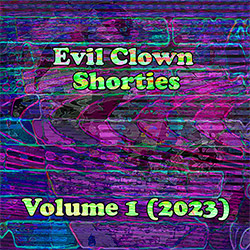
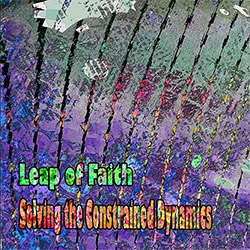

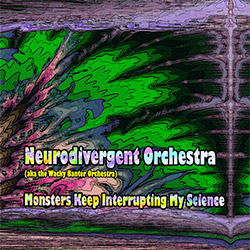






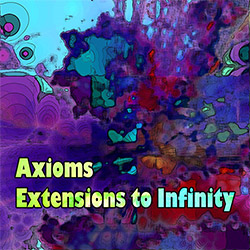


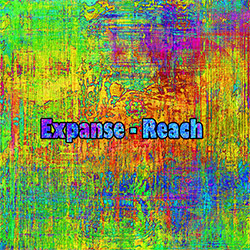
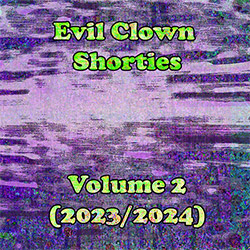
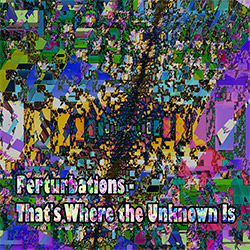



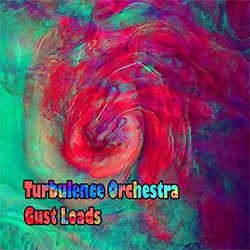
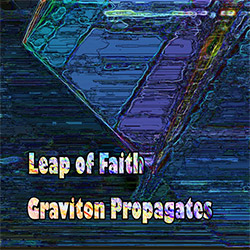
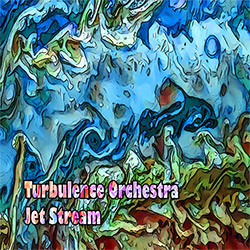
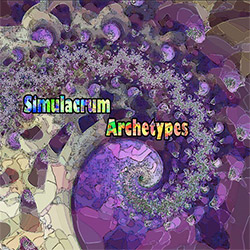

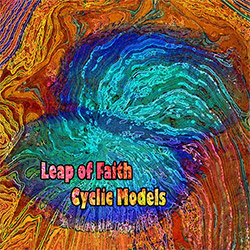


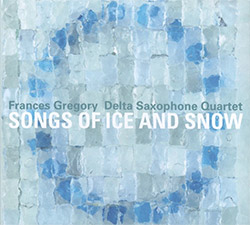
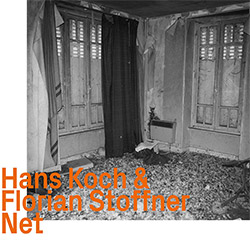
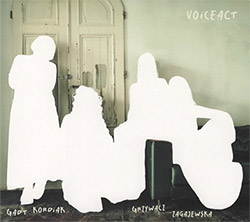



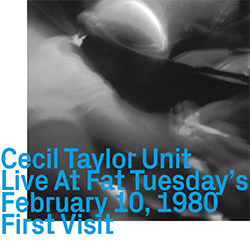
![Weirs and Magic Tuber Stringband : The Crozet Tunnel [CASSETTE + DOWNLOAD]](https://www.teuthida.com/productImages/misc4/35570.jpg)
![Attias, Michael (Attias / Leibson / Pavolka / Ferber / Hoffman): Quartet Music Vol. I: LuMiSong / Kardamon Fall [2 CDs]](https://www.teuthida.com/productImages/misc4/35531.jpg)
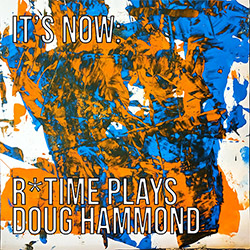

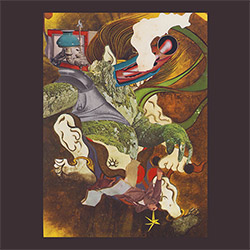

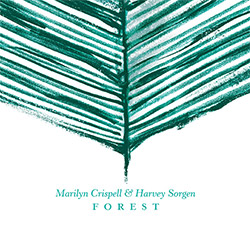

![Abcess Grenk: Erguss Von Licht [CASSETTE w/ DOWNLOAD]](https://www.teuthida.com/productImages/misc4/35560.jpg)
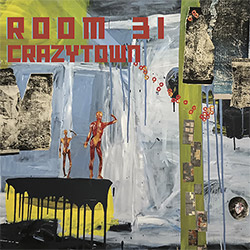


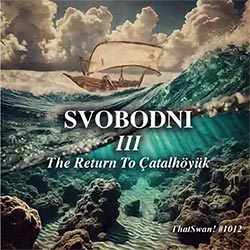

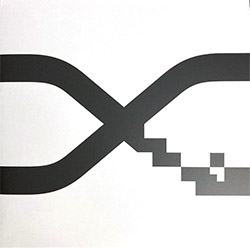
![Alva Noto: Xerrox Vol. 5 [VINYL 2 LPs]](https://www.teuthida.com/productImages/misc4/35359.jpg)

![Mezei, Szilard Tul A Tiszan Innen Ensemble: Reveszem [2 CDs]](https://www.teuthida.com/productImages/misc4/35499.jpg)





![Gush (Gustafsson / Sandell / Strid) + Guests: Gush 30 - Krakow 2018 [3 CD BOX SET]](https://www.teuthida.com/productImages/misc4/35526.jpg)





![Coleman, Steve & Five Elements: PolyTropos / Of Many Turns [2 CDs]](https://www.teuthida.com/productImages/misc4/35476.jpg)
![Sorey, Tyshawn (w/ Diehl / Ragahavan): The Susceptible Now [DOUBLE VINYL]](https://www.teuthida.com/productImages/misc4/35477.jpg)
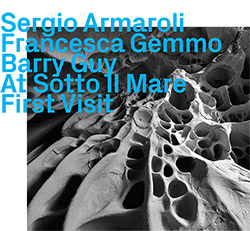
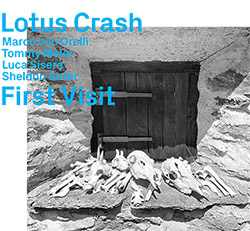
![Coltrane, John Quartet (w/ Tyner / Garrison / Jones): Impressions From Graz 1962, Revisited [2 CDs]](https://www.teuthida.com/productImages/misc4/35495.jpg)
![Guy, Barry / Ken Vandermark: Occasional Poems [2 CDs]](https://www.teuthida.com/productImages/misc4/34849.jpg)
![Weston, Matt: Communism Has Appeared On The Scene [VINYL 2 LPs]](https://www.teuthida.com/productImages/misc4/35546.jpg)

![Jeck, Philip: rpm [2 CDs]](https://www.teuthida.com/productImages/misc4/35455.jpg)
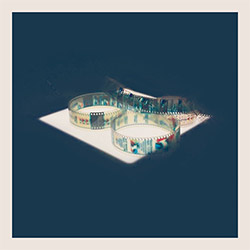

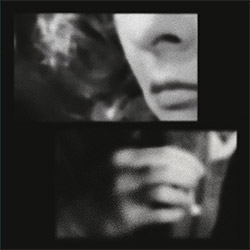
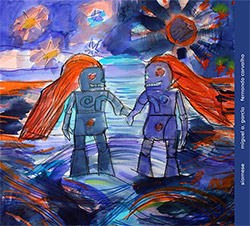


![DNS: Taking Big Bites Of The Khandas Three Cafes Deep [2 CDs]](https://www.teuthida.com/productImages/misc4/35334.jpg)
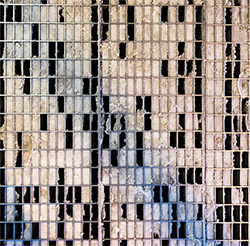
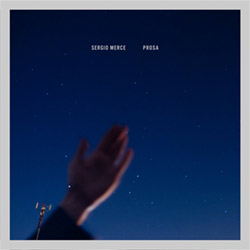
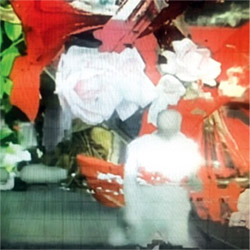

![Cleaver, Gerald: The Process [VINYL]](https://www.teuthida.com/productImages/misc4/34966.jpg)
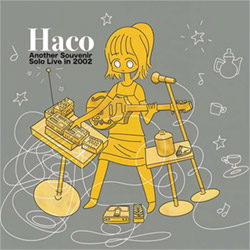


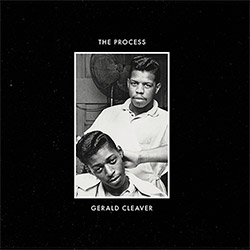
![Alva Noto: HYbr:ID II [VINYL 2 LPs]](https://www.teuthida.com/productImages/misc4/35201.jpg)
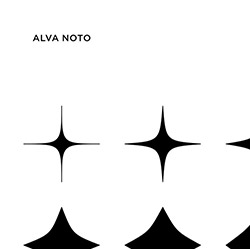
![Baron, Derek / Luke Martin: Distinct and Concealed [CASSETTE + DOWNLOAD]](https://www.teuthida.com/productImages/misc4/35079.jpg)
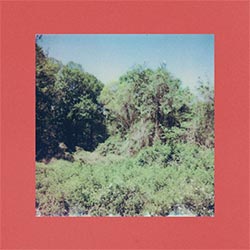
![Lonsdale, Eden: Dawnings [2 CDs]](https://www.teuthida.com/productImages/misc4/35480.jpg)


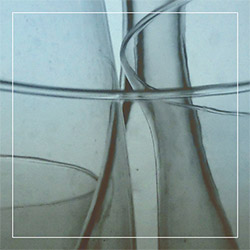




![Sanna, Claudio: Compositori Sardi Contemporanei II [2 CDs]](https://www.teuthida.com/productImages/misc4/35317.jpg)



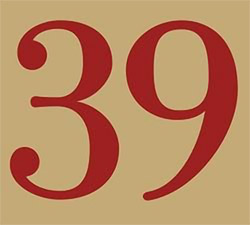
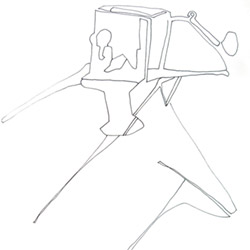


![Zurria, Manuel: Fame di Vento [3 CDs]](https://www.teuthida.com/productImages/misc4/35167.jpg)
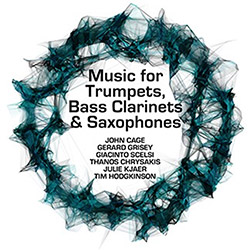
![Granberg, Magnus / Nattens Inbrott / Skogen: Holde Traume, Kehret Wieder! [2 CDs]](https://www.teuthida.com/productImages/misc4/35038.jpg)
![Frey, Jurg: Outermost Melodie [2 CDs]](https://www.teuthida.com/productImages/misc4/35039.jpg)

![Pavone, Jessica: Reverse Bloom [VINYL]](https://www.teuthida.com/productImages/misc4/34895.jpg)


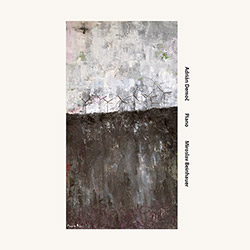

![Modney (Modney / Wooley / Gentile / Roberts / Pluta / Symthe / ...): Ascending Primes [2 CDs]](https://www.teuthida.com/productImages/misc4/34852.jpg)



![Elephant9 : Mythical River [VINYL]](https://www.teuthida.com/productImages/misc4/34624.jpg)



![Elephant9 with Terje Rypdal: Catching Fire [VINYL 2 LPs]](https://www.teuthida.com/productImages/misc4/35355.jpg)
![Deerlady (Obomsawin, Mali / Magdalena Abrego): Greatest Hits [VINYL]](https://www.teuthida.com/productImages/misc4/34876.jpg)




![Haino, Keiji: Black Blues [2 CDs]](https://www.teuthida.com/productImages/misc4/35109.jpg)



![Surplus 1980: Illusion of Consistency [CD]](https://www.teuthida.com/productImages/misc4/35069.jpg)
![Staiano, Moe: Away Towards the Light [VINYL + DOWNLOAD]](https://www.teuthida.com/productImages/misc4/35037.jpg)



![Caveira (Gomes / Sousa / Abras / Ferrandini): Ficar Vivo [VINYL]](https://www.teuthida.com/productImages/misc4/34643.jpg)
![Gregg, J. J. / David Van Auken: Lunar Prairie [CD w/ DOWNLOAD]](https://www.teuthida.com/productImages/misc4/34611.jpg)
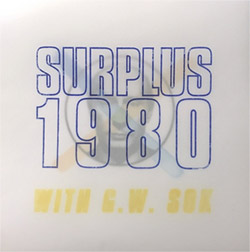
![Coultrain: Mundus [VINYL]](https://www.teuthida.com/productImages/misc4/32439.jpg)
![Mattin: Songbook #6 [VINYL]](https://www.teuthida.com/productImages/misc4/27317.jpg)
![Punkappella: Wake Up [7-inch VINYL]](https://www.teuthida.com/productImages/misc4/17519.jpg)
![Residents, The: WARNING: UNiNC.: Live And Experimental Recordings 1971-1972 [VINYL 2 LPs]](https://www.teuthida.com/productImages/misc4/31521.jpg)
![Coultrain: Phantasmagoria [VINYL]](https://www.teuthida.com/productImages/misc4/30142.jpg)
![Lennon, Sean Ono: Asterisms [VINYL]](https://www.teuthida.com/productImages/misc4/34517.jpg)
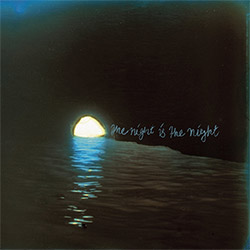
![Coley, Byron: Dating Tips for Touring Bands [VINYL]](https://www.teuthida.com/productImages/misc4/17906.jpg)

![Lost Kisses: My Life is Sad & Funny [DVD]](https://www.teuthida.com/productImages/misc4/lostKissesDVD.jpg)